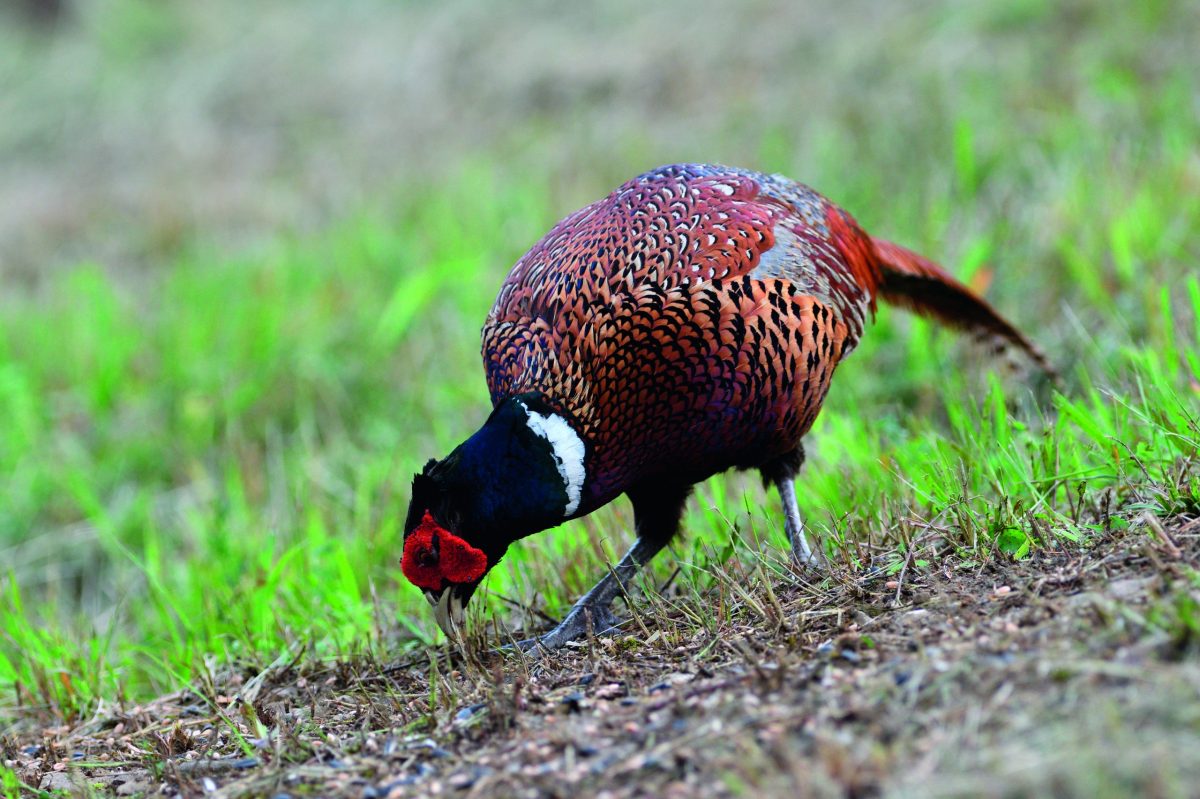The end-of-season work done by gamekeepers
The season ends on a high note, and now the hard work begins — providing ample feed for birds while deterring pests and scavengers

Feed scattered for pheasants benefits other species such as linnets, sparrows and yellowhammers
The scent of late-afternoon air hastened my footsteps as my stick crashed through dense cover. The last day of the season was drawing to a close. My mind and emotions were supercharged with thoughts of the fading months, memories and future challenges. “Watch the line” was the cry; birds had steadily broken from cover and could be briefly seen as they were pushed towards the Guns
“Hen, hen” filled the air as beaters called out to notify Guns of approaching birds. We were all in full hen protection mode — no season next year if we shoot the hens now.
Shots rang out, 20m or so until the end, beaters closing all around me, and one last push would see us through. Suddenly, with what could only be described as an eruption in the bushes by my side, a cock pheasant broke cover with a burst of energy I’ve seldom seen. It headed for the heavens, almost vertical like a firework, and everyone in the beating line stopped in amazement as the bird climbed and climbed.
Yells from the excited Guns signalled it had been spotted and, after what seemed like an age, shots rang out, but the pheasant was curling on a fresh west wind and he kept going and going. Guns saluted the passing cock and a cheer went up from the beaters.
What a way to end the final two days of the season and what a remarkable one it has been. The sheer excitement of the day and, indeed, the whole season was mirrored in the faces and expressions of all who had taken part. Sometimes you simply have to allow yourself to absorb the moment and lock it away forever. What wonderful sport
a wild shoot is.
With little or no time to take a breath, the days following the end of the season, for our part of Northumberland, were harsh. Freezing temperatures and snow flurries added to the bleak countryside. Food became a priority for all birds and the landscape, now showing its bones, made it a hard place to find a hearty meal. Even the wild-bird food crops were beginning to run short of valuable and varied seed.
At this time of year, daily rounds are conducted with the future in mind. Strategically placed hoppers need regular attention, feed levels monitored and maintained so visiting birds can find ample feed. Checks need to take into account possible pest problems. Hard conditions often mean that others, not so welcome, take advantage of the food on offer.
Rats are diligently dealt with and excluders keep away flocks of rooks and jackdaws, which can make short work of a bag or two of precious wheat. Deer have homed in on this available food and need to be deterred with strong wire mesh.
Feeding frenzy
Scattered feed in regular spots contains a mix of seed sizes and targets the many seed-eating birds that search the farmland. Linnets, chaffinches and yellowhammers join house and tree sparrows in a feeding frenzy. Good, varied and regular feed maintains all birds’ condition and grants the advantage of added predator evasion. Superior condition going into the breeding season can often mean more success, a key factor when you are looking at a wild population producing a harvestable surplus.
At long last, I hear noises from the Government putting real commitment behind conservation enhancements to the natural world. For months now I’ve been nervous of ageing Countryside Stewardship agreements and possible replacements — or not. Stewardship, for us, has worked. Without the financial clout these schemes provide, landscape-scale provision of conservation-enhancing measures would be jeopardised.
Provision of quality habitats has given so much to the conservation status of what can only be described as a severely depleted farmed environment. Everything, including agriculture, will benefit from joining a new scheme.








